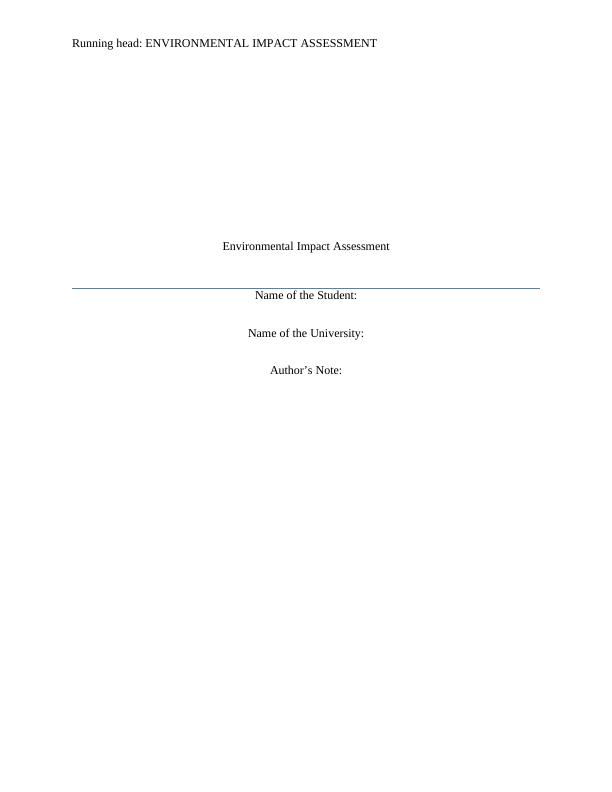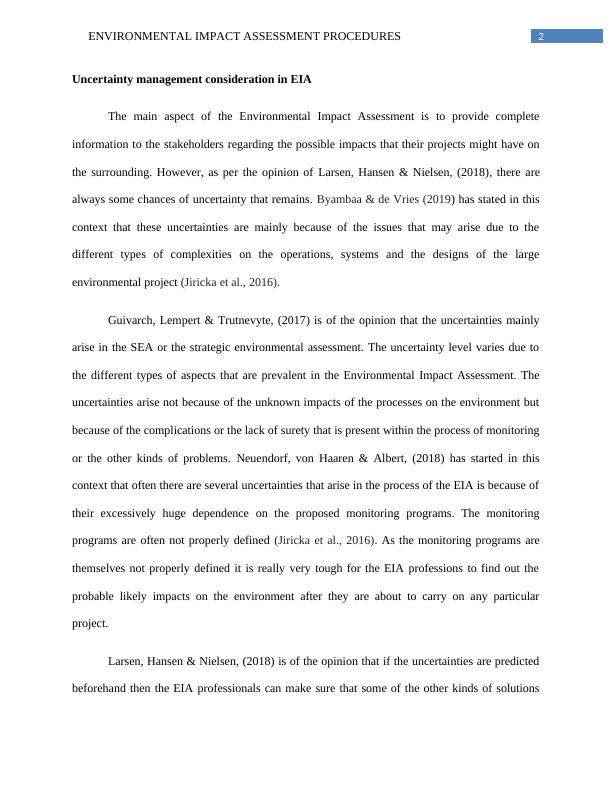Uncertainty Management in Environmental Impact Assessment
Assignment 1 marking rubric for Best Practice Principles in EIA, with considerations for pass, credit, distinction, and high distinction levels in the use of literature and presentation and communication.
6 Pages1224 Words93 Views
Added on 2023-04-10
About This Document
This article discusses the uncertainties that arise in Environmental Impact Assessment (EIA) and explores strategies for managing them effectively. It highlights the importance of including stakeholders in decision-making processes and developing well-defined monitoring programs. The article emphasizes the need for clear communication and collaboration to mitigate uncertainties in EIA.
Uncertainty Management in Environmental Impact Assessment
Assignment 1 marking rubric for Best Practice Principles in EIA, with considerations for pass, credit, distinction, and high distinction levels in the use of literature and presentation and communication.
Added on 2023-04-10
ShareRelated Documents
End of preview
Want to access all the pages? Upload your documents or become a member.
Health Impact Fund in India
|12
|2213
|18



